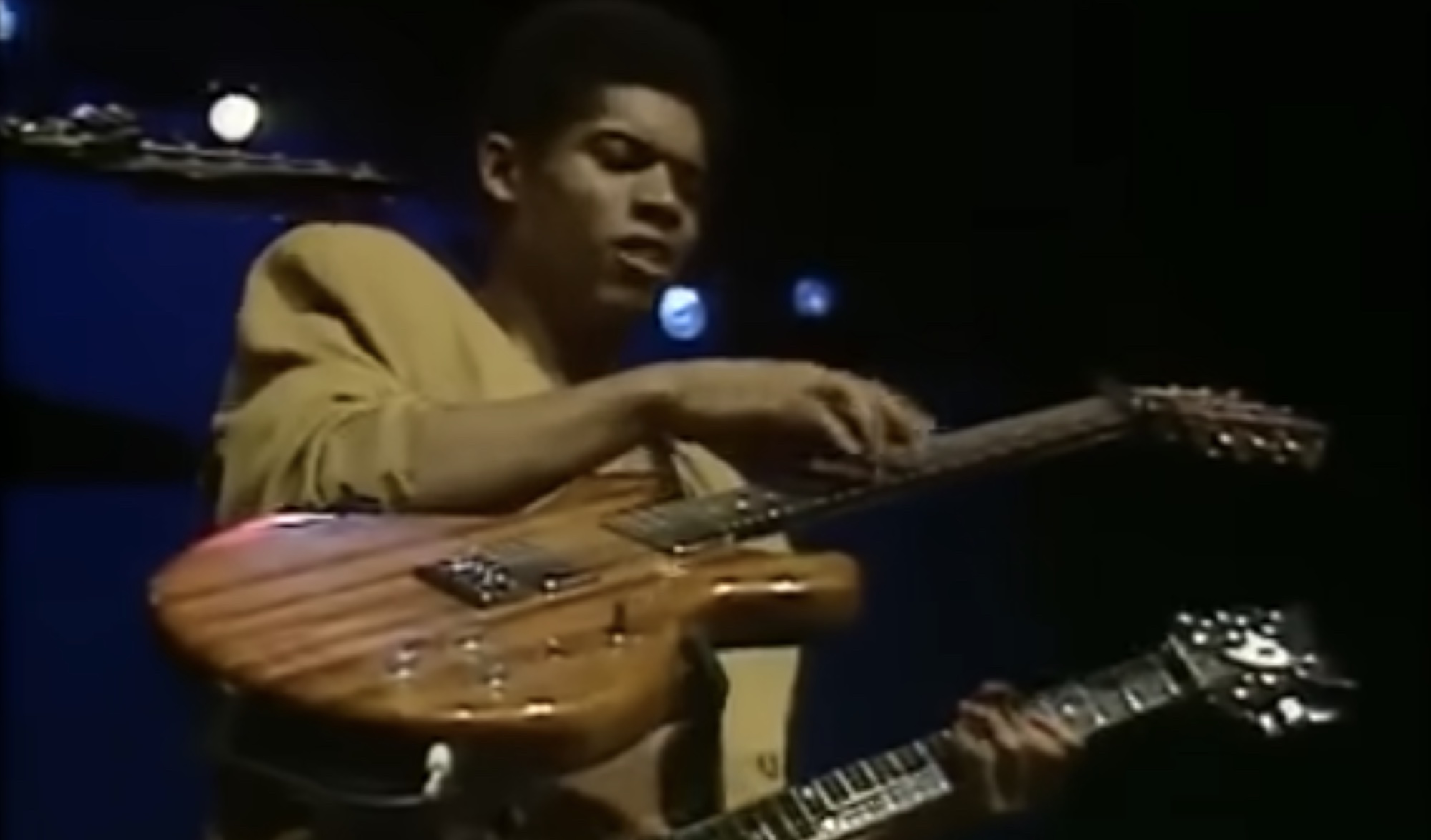
When you think of tapping as a guitar technique, naturally, one guitarist comes to mind: Eddie Van Halen.
Though he wasn't the first guitarist to incorporate the technique into their playing, countless others set out to master tapping in the wake of Van Halen's hugely influential 1978 instrumental, Eruption. Though not exclusively, the tidal wave of tapping that emerged in that brief piece's wake tended to appear as an accoutrement to the solos found in rock songs of the big-hair, Soldano-friendly variety.
Nowadays, players taking tapping in fascinating new directions – such as Yvette Young, Felix Martin, Dre DiMura, Ichika Nito, and, most prominently, Tim Henson – are quite plentiful. Back in the '80s though, one tapping practitioner in particular was quite happy to stand out from his shred-minded peers – both in his approach to the technique, and the material he used it in.
Stanley Jordan is best-known as a jazz guitarist, though that simple label undersells his talent. His “touch” tapping technique shares some DNA with the approach made so famous by Eddie Van Halen, but can really be thought of as its own beast – a way of playing that not only expanded the capabilities of what could be done on one fretboard, but also allowed Jordan to create musical landscapes on two fretboards simultaneously.
A vivid illustration of the latter can be found in the video below, which features Jordan's radical re-interpretation of that classic guitar store employee antagonizer – Led Zeppelin's Stairway to Heaven.
If you're reading this, Stairway to Heaven is likely – whether you like it or not – ingrained entirely into your brain. Indeed, before the internet had even caught on with the general public, the song was already a meme.
It's difficult to take a song shared by so many guitar players and reinvent it for yourself – but that's exactly what Stanley Jordan does in this live performance, and on the studio version of the song found on his 1988 album, Flying Home.
While paying respects to Jimmy Page's familiar fretwork, Jordan takes the ubiquitous epic and imbues it with a cool jazz touch, and classical elegance.
Jordan spoke of tapping's musical versatility in a 1984 Guitar Player lesson (accessible via Jordan's website), detailing how it lets a guitarist blur the line between genres, and simply do more with their instrument – either as a soloist or with a band.
The technique, Jordan says, “gives you a level of musical and orchestral complexity previously possible only on keyboard instruments. You can create bass and chord accompaniment to your own leads as a self-contained soloist. You can also perform complex counterpoint, such as Bach two- and three-part inventions.
“With a band,” he goes on to say, “you can use your hands together to play leads with undreamed-of speed and agility.”
A 1987 network TV interview with Jordan, visible above, gives some fantastic close-ups of Jordan's left- and right-hand tapping technique. You can also see from the interview just how low the guitarist's action is.
“The most important single factor” of tapping, Jordan wrote in 1984, “is low action. The strings should practically touch the frets.
“This is absolutely crucial for ease of playing, clarity, and sustain. If you have tried tapping with normal action, you probably heard a weak, dull tone, because a large portion of the attack was the sound of the finger hitting the string. But with low action, a very light tap unites string and fret immediately, giving you a crisp tone.”
Though he wasn't the first to use the tapping technique either, one-time Genesis guitarist Steve Hackett is widely regarded as its (original) pioneer.
Hackett, for one, told Guitar World in a 2012 interview (conducted, mind you, when Eddie Van Halen was still alive) that he regarded Stanley Jordan as “probably the most proficient tapper out there“.







